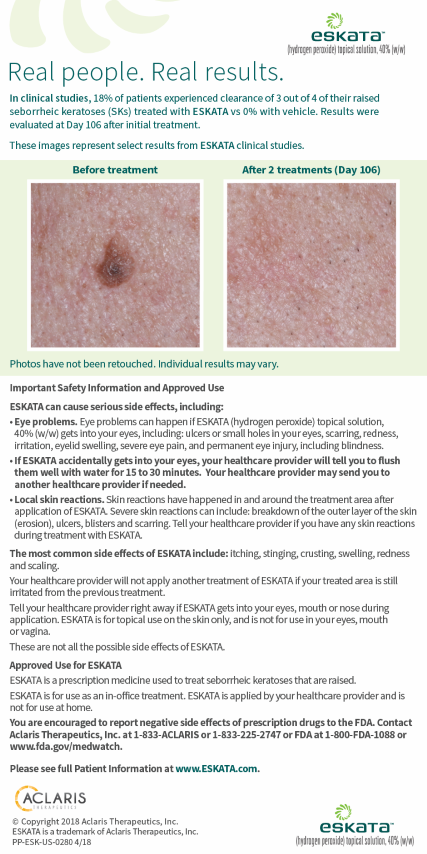Erasing Age Spots: New Topical Treatment for Seborrheic Keratoses
By Marissa Carignan, PA-C.
Seborrheic Keratoses (SKs), often referred to as “age spots” or “barnacles”, are some of the most common skin lesions diagnosed by dermatologists on a daily basis. They can range in color from white to black but are typically tan/brown. Seborrheic Keratoses may be flat but often have a raised and rough texture, and have been described as dabs of wax stuck onto the skin. They are harmless and have no malignant potential, but are often cosmetically distressing to patients or become irritated and itchy due to their location or clothing. Conventionally, treatment options have included freezing the growth with a cold spray called liquid nitrogen (cryosurgery), numbing up the growth and scraping it off with a blade (shave removal), or numbing it up and removing it with an electric current (electrocautery and curretage), until the approval of Eskata in December of 2017.

Eskata is the first prescription topical treatment for Seborrheic Keratoses. Eskata is indicated for raised SKs and is not covered by insurance. It is a concentrated solution of 40% hydrogen peroxide in a pen-like applicator that is applied in your dermatologist’s office to each lesion four times about a minute apart. Up to two treatments are required and are spaced 3 weeks apart. The most common side effects of Eskata are redness, stinging, swelling, crusting, itching, and scaling. These side effects are temporary and generally improved after 1 week of treatment. Scarring and/or discoloration with this procedure is minimal and occurred in only 3% of patients in the clinical studies.
If you have any raised skin lesions of concern, schedule an appointment today with your dermatology provider to confirm what is going on and determine if Eskata is right for you!


